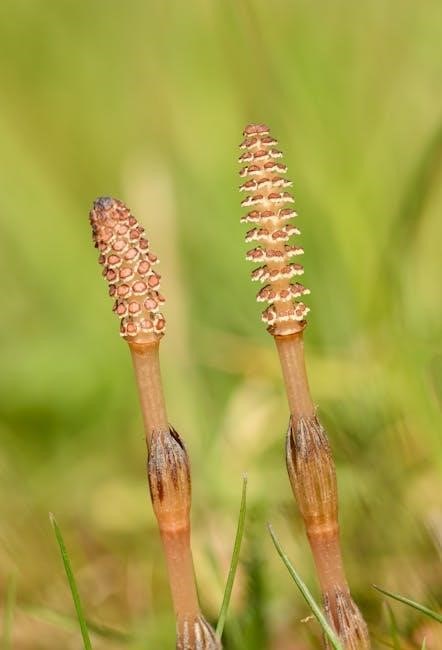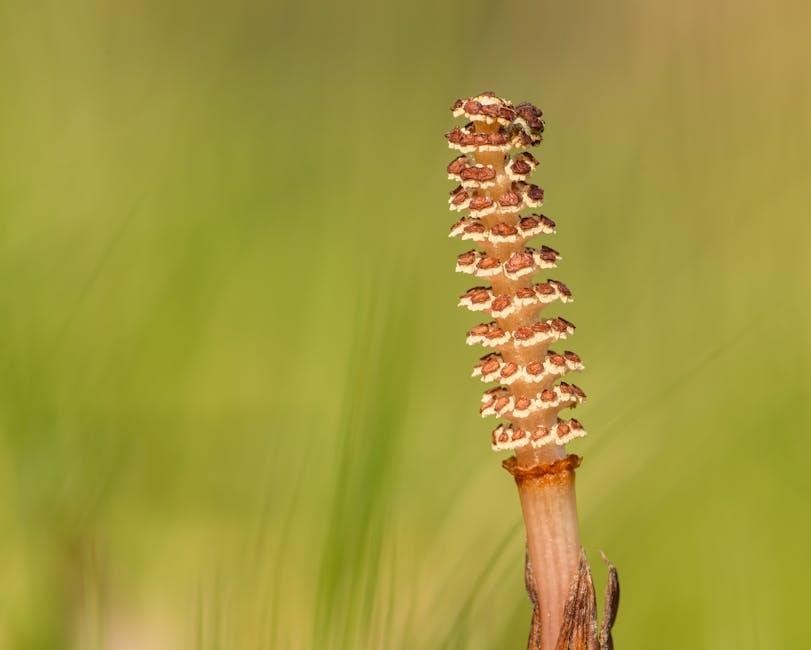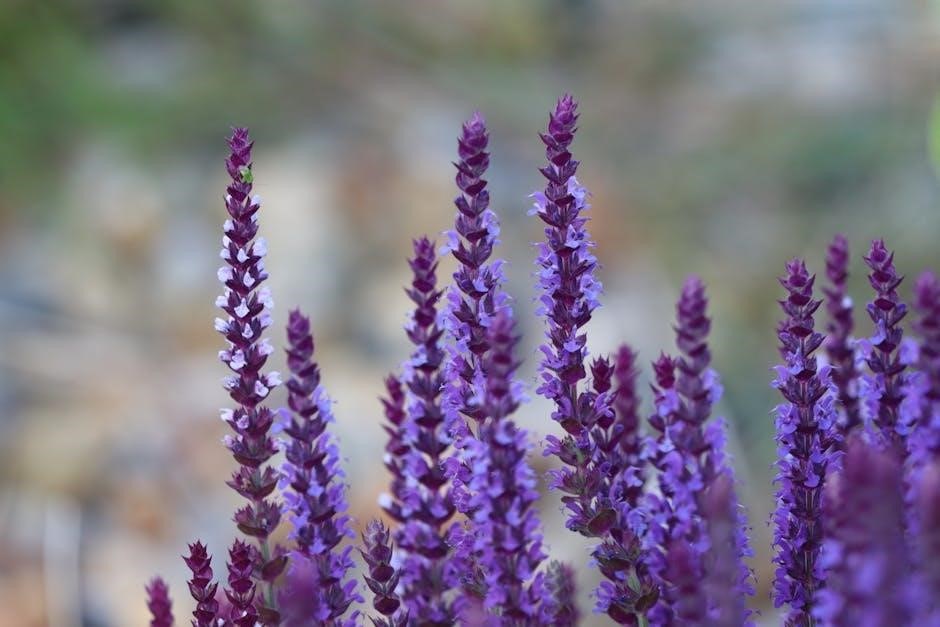peterson field guides medicinal plants and herbs
Peterson Field Guides: Medicinal Plants and Herbs
The Peterson Field Guides series stands as a hallmark of excellence in field identification. This specific guide focuses on medicinal plants and herbs. It is designed for both novice and experienced naturalists alike.
Overview of Peterson Field Guides
Peterson Field Guides are renowned for their comprehensive and user-friendly approach to identifying various aspects of the natural world. The Peterson Identification System, a key feature, is celebrated for its accuracy and ease of use. The guides cover a wide range of subjects, from birds to insects to plants, providing essential information for nature enthusiasts. Their commitment to clarity and precision has made them a trusted resource. The medicinal plants guide continues this tradition, offering detailed insights into herbal remedies.
Focus on Eastern and Central North America
This edition of the Peterson Field Guide specifically covers the medicinal plants and herbs found in Eastern and Central North America. It is a valuable tool for identifying local flora.
Geographic Scope of the Guide
The guide meticulously details the medicinal plants and herbs thriving across Eastern and Central North America. This region encompasses a diverse range of habitats, from the Atlantic coast to the central plains. It extends from southern Canada down through the eastern United States. The guide’s focus ensures accurate identification within this specific geographical area. This regional approach maximizes its usefulness for local enthusiasts and researchers. It allows for a more comprehensive and targeted exploration of medicinal flora. This detailed coverage sets it apart from broader, less specific guides.
Importance of Regional Identification
Regional identification is crucial when dealing with medicinal plants and herbs. The effectiveness and safety of these plants can vary significantly depending on the specific region. Factors such as climate, soil composition, and local ecosystems influence a plant’s chemical makeup. This variation directly impacts its medicinal properties and potential toxicity. Accurate regional identification minimizes the risk of misidentification. It ensures users are working with the correct species for their intended purpose. It prevents accidental ingestion of harmful look-alikes, making it an essential aspect of responsible herbalism and foraging.
Key Features of the Field Guide
The guide employs the renowned Peterson Identification System for easy and accurate plant identification. It includes vivid visual aids such as color photos and detailed illustrations to assist users.
Peterson Identification System
The Peterson Identification System is a cornerstone of this field guide, celebrated for its user-friendly approach and precision in plant identification. This unique system emphasizes key identifying characteristics, allowing users to quickly narrow down possibilities. By focusing on visual patterns and diagnostic features, even beginners can confidently distinguish between various medicinal plants and herbs. Its intuitive design makes learning enjoyable, fostering a deeper understanding of the natural world. The system ensures accurate identification, critical for safely utilizing medicinal plants. It avoids misidentification, which is important for the user.
Visual Aids: Photos and Illustrations
This field guide is enriched with a wealth of visual aids, featuring both photographs and illustrations to enhance the identification process. Over 300 color photos are included. These visual elements provide detailed depictions of the plants, highlighting their key characteristics, flowers, leaves, and fruits. The illustrations offer a different perspective, often emphasizing specific features that may be difficult to capture in a photograph. By combining these visual resources, the guide provides a comprehensive and accessible means of identifying medicinal plants and herbs. The images aid in understanding the subtle differences between species.

Content and Scope
This guide offers comprehensive coverage of over 500 medicinal plants and herbs. It includes information on habitats, uses, and crucial warnings. The guide also provides safety information.
Number of Plants Covered (500+)
The Peterson Field Guide to Medicinal Plants and Herbs offers a comprehensive overview of over 500 different species found in Eastern and Central North America. This extensive collection includes both native and naturalized plants. It ensures users have a wide range of information at their fingertips. The guide’s breadth makes it an invaluable resource for identifying and understanding the medicinal properties. It also helps with the traditional uses of a substantial number of plants within the specified region, catering to both casual enthusiasts and serious researchers.
Information on Habitats and Uses
This Peterson Field Guide provides detailed insights into the habitats where each medicinal plant thrives. It also includes their traditional and contemporary applications. The guide describes the specific environments, such as forests, fields, and wetlands, where each plant can be found. Furthermore, it elaborates on the historical uses of these plants in herbal medicine. It details their current applications as supplements or alternative remedies. This information bridges the gap between traditional knowledge and modern understanding, making it a valuable resource for both historical and practical uses.
Warnings and Safety Information
A critical component of the Peterson Field Guide is its emphasis on safety. It provides essential warnings related to the use of medicinal plants. The guide highlights potential side effects, contraindications, and interactions with prescription drugs. It alerts users to plants that may be toxic if ingested or handled improperly. This section is crucial for preventing adverse reactions. It ensures that users are well-informed about the risks associated with each plant. By including comprehensive safety information, the guide promotes responsible and cautious use of medicinal plants. This enhances user safety and awareness.
Authors: Foster and Duke
This edition is authored by Steven Foster and James A. Duke. They bring a wealth of knowledge. They have over 100 years of combined experience in medicinal plants and herbs.
Expertise and Experience
Steven Foster and James A. Duke, the authors behind this Peterson Field Guide, possess extensive knowledge in the realm of medicinal plants. Their combined experience exceeds a century, marking them as leading authorities. Foster’s expertise lies in botanical medicine, while Duke was an ethnobotanist, exploring traditional plant uses across cultures. Their collaboration ensures a comprehensive and reliable resource. The authors’ deep understanding of plant identification, medicinal properties, and safe usage makes this guide invaluable for enthusiasts and professionals seeking accurate information. The guide reflects their commitment to promoting responsible and informed use of medicinal plants.

Updates in Third Edition
The third edition incorporates the latest research and advancements in medicinal plant studies. Steven Foster and James A. Duke updated the guide to reflect these recent findings for accuracy.
Recent Advances in Medicinal Plant Study
The third edition of the Peterson Field Guide incorporates recent breakthroughs in the medicinal plant field. These advancements include updated understandings of plant constituents, pharmacological effects, and traditional uses. Foster and Duke leveraged over 100 years of combined experience. They also integrated the latest scientific findings. This ensures the guide reflects the most accurate and current knowledge regarding the identification, application, and safety considerations of medicinal plants. This is especially vital in supplements.
Comparison to Other Guides
This guide distinguishes itself through its Peterson Identification System. It also offers detailed information specific to eastern and central North America. A comparable guide covers western North America.
Western Medicinal Plants and Herbs
While the primary focus is on the eastern and central regions, a complementary Peterson Field Guide exists for western North America. This guide offers the most complete information on the nearly 500 species covered. It presents current popular and traditional uses. Much of this information is available for the first time, making it an invaluable resource. It is co-authored by Steven Foster and Christopher Hobbs. It provides comprehensive coverage tailored to the unique flora of the western United States and Canada.

Availability and Purchase
The Peterson Field Guide to Medicinal Plants is widely available for purchase online. You can find it at major retailers such as Amazon and Walmart. Check for both new and used copies.
Online Retailers (e.g., Amazon, Walmart)
Finding the Peterson Field Guide to Medicinal Plants and Herbs is quite easy thanks to its availability through numerous online retailers. Major platforms like Amazon and Walmart regularly stock the guide, often offering it at competitive prices. These sites provide the convenience of online ordering and delivery straight to your doorstep. Furthermore, keep an eye out for deals on these platforms, as they occasionally offer discounts or promotions. Comparing prices across different retailers ensures you get the best possible value.

Uses and Applications
Medicinal plants are increasingly recognized as valuable supplements and potential alternatives to prescription medications. This guide aids in identifying plants for traditional remedies, promoting informed and safe usage.
Supplements and Alternatives to Prescription Drugs
The growing interest in natural medicine has elevated the importance of resources like the Peterson Field Guide. This guide can assist in identifying plants that are used as supplements. It may also help users to find plants which are considered alternatives to conventional prescription drugs. However, it is very important to consult with health professionals when considering supplements. It is especially important to consult with experts when considering alternatives to prescription medicine. The guide provides information to help people make informed decisions.
